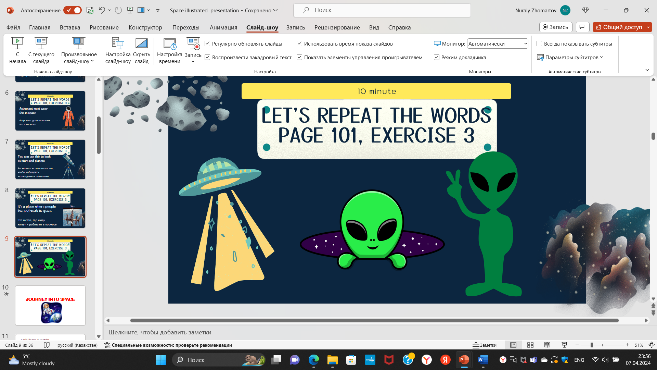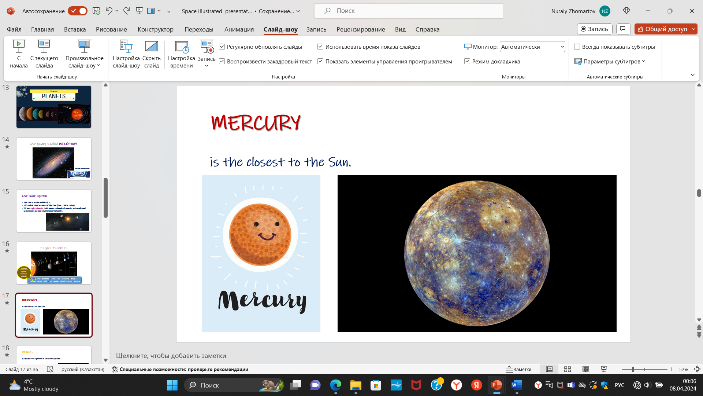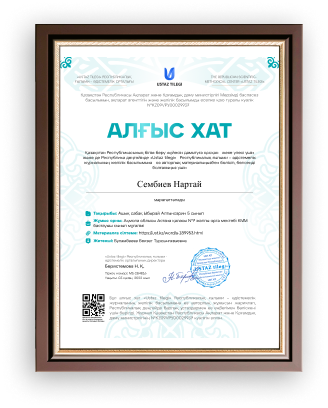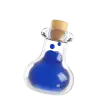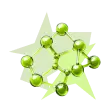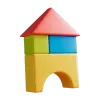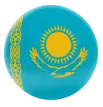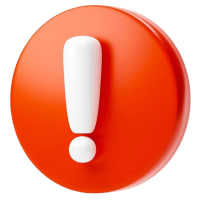
Lesson plan for the 4th Grades
|
Module 7 |
|
||||||||||||||||||||||||||||||||||||||||||||||||||||||||||||||||||||||||||||||||||||||||||||||||||||||||||||||
|
Teacher’s name: |
Zhomartov Nurali Ruslanovich |
||||||||||||||||||||||||||||||||||||||||||||||||||||||||||||||||||||||||||||||||||||||||||||||||||||||||||||||
|
Date: |
08.04.2024 |
||||||||||||||||||||||||||||||||||||||||||||||||||||||||||||||||||||||||||||||||||||||||||||||||||||||||||||||
|
Grade: 4 |
Number of people present 13 |
Number of people absent |
|||||||||||||||||||||||||||||||||||||||||||||||||||||||||||||||||||||||||||||||||||||||||||||||||||||||||||||
|
The Theme of the lesson |
Planets 1 |
||||||||||||||||||||||||||||||||||||||||||||||||||||||||||||||||||||||||||||||||||||||||||||||||||||||||||||||
|
Objectives according to the Curriculum |
4.1.10.1 recognise words similar to words in student native language. 4.2.7.1 contribute a growing range of suitable words, phrases, and sentences including giving opinions during short pair, group and whole class exchanges. |
||||||||||||||||||||||||||||||||||||||||||||||||||||||||||||||||||||||||||||||||||||||||||||||||||||||||||||||
|
Objectives of the lesson |
All learners will be able to: Most learners will be able to: They will learn the names of the planets, interesting facts about the solar system. Tenses in English. Some learners will be able to: |
||||||||||||||||||||||||||||||||||||||||||||||||||||||||||||||||||||||||||||||||||||||||||||||||||||||||||||||
|
Evaluation criteria |
|
||||||||||||||||||||||||||||||||||||||||||||||||||||||||||||||||||||||||||||||||||||||||||||||||||||||||||||||
|
Level of thinking skills |
High order thinking |
||||||||||||||||||||||||||||||||||||||||||||||||||||||||||||||||||||||||||||||||||||||||||||||||||||||||||||||
|
During the lesson: |
|||||||||||||||||||||||||||||||||||||||||||||||||||||||||||||||||||||||||||||||||||||||||||||||||||||||||||||||
|
The stage of the lesson/timing |
Actions of the teacher:
|
Actions of the pupils: |
Student actions with special educational needs |
Assessment |
Resources |
||||||||||||||||||||||||||||||||||||||||||||||||||||||||||||||||||||||||||||||||||||||||||||||||||||||||||
|
The beginning of the lesson/ min |
Greetings (1 min) The teacher greets students; students respond to greeting and take their places. Hello, boys and girls! How are you?
Warm up (4 min)
Answer the question in unison, everyone has different answers. If you are in a good mood, clap once and say "Super". |
Students who are in a good mood clap once and say "Super" enthusiastically. Other students might respond differently based on their mood, some might say "Good," "Okay," or "Not so good," reflecting their individual feelings. |
Provide visual cues: Use visual aids such as picture cards or symbols to represent different responses. For example, a picture of a smiley face for "Super," a neutral face for "Okay," and a sad face for "Not so good." Offer physical prompts: Guide the student through the actions needed to participate in the activity. For instance, gently prompt them to clap once if they're in a good mood. |
This activity allows students to express themselves while still participating in a group response, fostering a sense of individuality within a collective setting. |
PPT |
||||||||||||||||||||||||||||||||||||||||||||||||||||||||||||||||||||||||||||||||||||||||||||||||||||||||||
|
The middle of the lesson |
Let’s repeat the words ( 7 min)
In this activity, the teacher reads out definitions of words, and the students have to guess which word the teacher is describing. Definitions: It’s a piece of rock that looks like a bright star with a tail. You have to use this when you travel in space. Astronaut must wear this in space. You can use this to look at stars and planets. It’s a place where people live and work in space.
Planets. (10 min) The teacher includes a video about the solar system. cartoon. Without naming the topic of the lesson. Explanation of the topic. The name of each planet and the facts about them. The Sun is in the middle of it. It‘s called solar because of the Sun (Sun = Sol in Latin). It has eight planets, 144 moons, a bunch of comets, asteroids and space rocks, ice and several dwarf planets. It‘s always easier to make up a silly sentence to remember things! My Very Educated Mother Just Stood Up Noisily. Mercury Venus Earth Mars Jupiter Saturn Uranus Neptune
Interesting facts (5 min) A bonus task for 10
points per lesson.
. Pair work (5 min) The pair that scores the most points wins. Page 106, exercise 17. Timer: 3 minutes. Game (3 min)
|
In this activity, the students are tasked with guessing the words based on the definitions provided by the teacher. Students contemplate the definitions and then offer their guesses. Student 1: "Is the first word 'comet'?" Student 2: "I think it's 'spacesuit' for the third one." Student 3: "The fourth one might be 'telescope.'" Student 4: "And for the last one, maybe 'space station'?"
The student flips to page 106 and reads exercise 17, which instructs them to calculate the area of various geometric shapes. They set a timer for 3 minutes and begin solving the problems as quickly as possible, using the appropriate formulas and methods for each shape. As the seconds tick away, they work through the calculations, aiming to finish within the time limit. The students gather around to watch a video that features images or animations of planets. As each planet appears on the screen, they collectively shout out the name of the planet in chorus. They eagerly wait for each new planet to appear, trying to be the first to correctly identify and call out its name. This activity helps them reinforce their knowledge of the planets in our solar system while also fostering a sense of teamwork and excitement. |
For students with special needs, who may require additional support or accommodations, their actions could vary based on their individual needs and abilities. Here are some potential actions they might take:
Students must guess the topic of the lesson. Peer Support: Pair students with peer buddies who can assist them in reading and understanding the task. Peer buddies can provide explanations, clarify instructions, and offer support as needed, promoting social interaction and collaboration. Students write four calculations and check their answers Students work alone and order the task. Students read the questions and answer them. Students work with clocks and complete the sentences Students work in groups and complete the task The student flips to page 106 and reads exercise 17, which instructs them to calculate the area of various geometric shapes. They set a timer for 3 minutes and begin solving the problems as quickly as possible, using the appropriate formulas and methods for each shape. As the seconds tick away, they work through the calculations, aiming to finish within the time limit. The students gather around to watch a video that features images or animations of planets. As each planet appears on the screen, they collectively shout out the name of the planet in chorus. They eagerly wait for each new planet to appear, trying to be the first to correctly identify and call out its name. This activity helps them reinforce their knowledge of the planets in our solar system while also fostering a sense of teamwork and excitement. |
1 point for each correct answer Teacher evaluates and guides students 1 point for each correct answer 1 point for each correct answer 1 point for each correct answer 1 point for each correct answer 1 point for each correct answer 1 point for each correct answer |
PPT Board Book https://www.youtube.com/watch?v=w36yxLgwUOc PPT
ЖИ арқылы жасау
ЖИ арқылы жасау
Бөлісу 1 - айлық Материал тарифі-96% жеңілдік 00 05 00 ҚМЖ
Ашық сабақ
Тәрбие сағаты
Презентация
БЖБ, ТЖБ тесттер
Көрнекіліктер
Балабақшаға арнарлған құжаттар
Мақала, Эссе
Дидактикалық ойындар
және тағы басқа 400 000 материал
Барлық 400 000 материалдарды шексіз жүктеу мүмкіндігіне ие боласыз 1 990 ₸ 49 000₸ 1 айға қосылу Материалға шағымдану Бұл материал сайт қолданушысы жариялаған. Материалдың ішінде жазылған барлық ақпаратқа жауапкершілікті жариялаған қолданушы жауап береді. Ұстаз тілегі тек ақпаратты таратуға қолдау көрсетеді. Егер материал сіздің авторлық құқығыңызды бұзған болса немесе басқа да себептермен сайттан өшіру керек деп ойласаңыз осында жазыңыз Жариялаған: Жомартов Нурали РуслановичШағым жылдам қаралу үшін барынша толық ақпарат жіберіңіз Lesson plan for the 4th Grades. Planets 1.
Тақырып бойынша 11 материал табылды
Lesson plan for the 4th Grades. Planets 1.Материал туралы қысқаша түсінік
Objective: By the end of the lesson, students will be able to:
Identify the eight planets in the solar system.
Describe the unique characteristics of each planet.
Understand the order of the planets in the solar system.
Materials Needed:
Visual aids (posters, pictures, or videos) showing the solar system and its planets.
Paper and pencils for students.
Worksheets or handouts about the planets.
Duration: 45 minutes
Материалдың қысқаша нұсқасы Lesson plan for the 4th Grades
| ||||||||||||||||||||||||||||||||||||||||||||||||||||||||||||||||||||||||||||||||||||||||||||||||||||||||||


